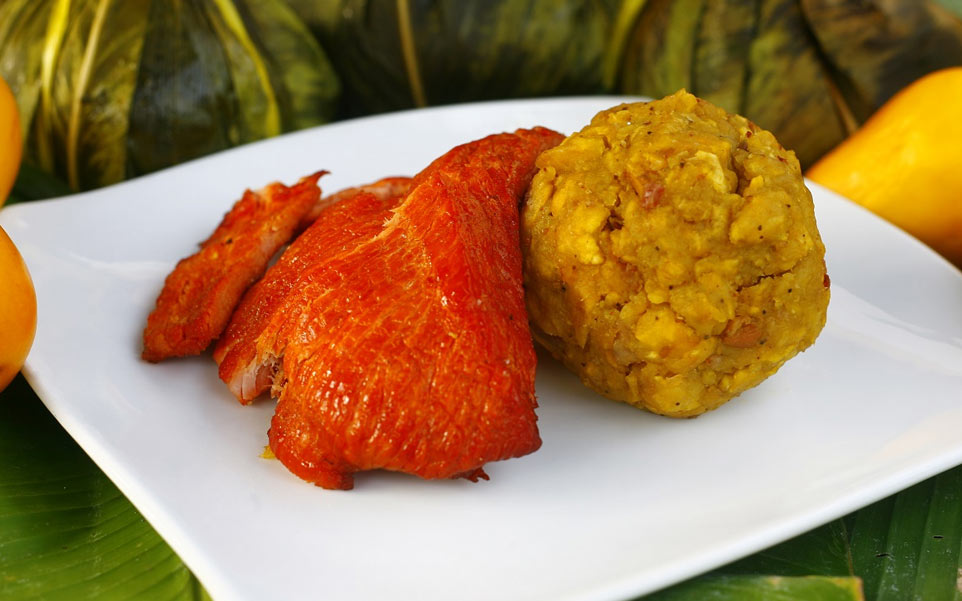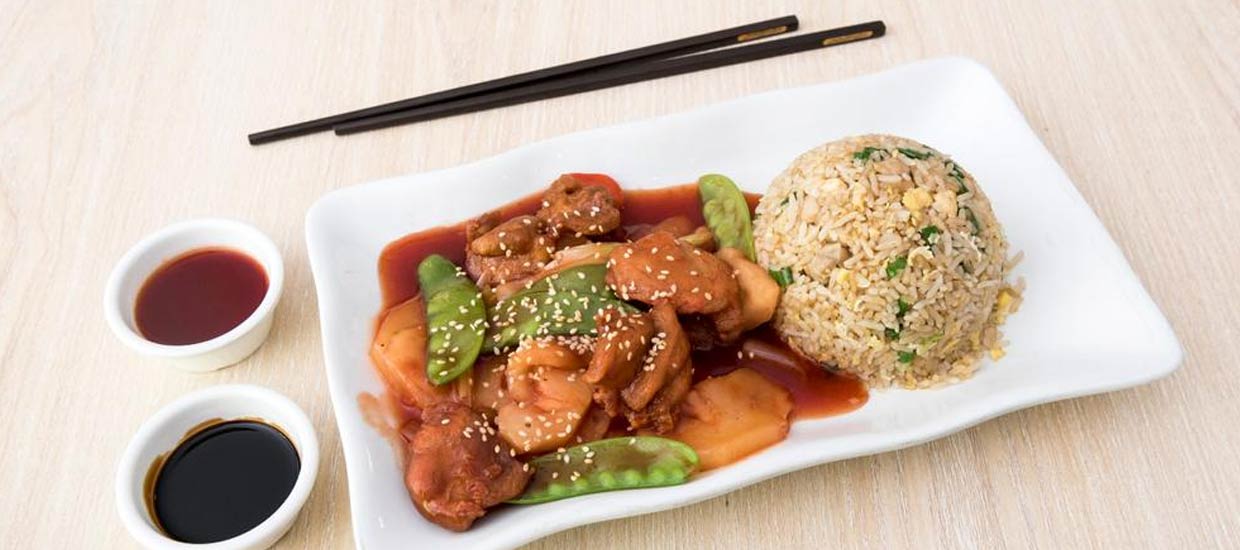Our favorite kind of cultural tourism is the one you do via your mouth (because, um, yummy; but also, cuisine is part of a nation’s culture, right?). Thus, taking a food tour in Peru or any other destination you visit is a must. But with that in mind, a question inevitably surges: How do you grade food by location?
It is hard to rank cuisine by country or even city. Not only will it get you in trouble with culinary nationalists, but there is just a lot out there to try. Luckily for us, Peru solves this problem—partially, at least. A South-American nation with a bursting cuisine powered by worldwide centuries-in-the-making immigration. Indigenous, Spanish, Italian, Japanese, African, and Chinese cooks have settled there throughout its eventful history.
All of these cooking traditions have built together Peruvian cuisine over an eclectic—yet delicious—mix of local and imported ingredients. Besides being homeland to Machu Picchu, Peru is one scrumptious melting pot adored by locals and foreigners alike. Its food has become the cusp source of national pride and is increasingly one of the reasons to visit. There, award-winning chefs have grown into full-fledged celebrities with cult-like fandoms.
Amidst Ceviche and Lomo Saltado—two of the most popular foods in Peru—, there are additional hidden culinary gems known only by Peruvian taste buds. Would you like to know about them? If so, these are Terra Explorer’s top 5 little-known savory dishes you must eat in Peru (and where to eat them), according to our local team’s hard-to-please palates.
“When you get together ají (chili pepper) and soy sauce, it always tastes good”, says Mitsuharu Tsumura. He is the driving force behind the recognition of Nikkei Cuisine as a ‘thing’. Japanese culinary imprint is so ingrained in Peru’s everyday food, it goes rather unnoticed—not purposely, of course, but because of how much they have become one of the same. Even famed ceviche changed for good, influenced by Japanese-Peruvian cooks’ unique take on fresh seafood.
Back in the 19th century, thousands of Japanese began migrating to Peru. At the time, they were left to their own culinary devices, exploring local ingredients and mixing them with their homeland cooking traditions. Because of these migrants, coastal Peruvians had a newfound love for seafood. On the other hand, the Japanese added ingredients like ajíes, cilantro, and sillao (soy sauce that previous Chinese settlers brought to Peru) to their dishes.
Maido, Mitsuharu’s restaurant, is not only one of the best places to eat in Lima, but in the world. A sanctuary for Nikkei dishes, Maido ranks 11th in The World’s 50 Best Restaurants list. From there, Mitsuharu popularized the latest craze from ever-sprawling Peruvian cuisine: makis acevichados. They are Peruvian sushi rolls with a ceviche-inspired dipping sauce. You can find them at every sushi restaurant in Peru, but try them at Maido if you’re into assured gastronomic amazements—and aren’t we all?
You might be interested in: 5 Must Go Restaurants In Peru
Next on this food tour: Seco. It translates as “Dry”, but the dish is all but short from dry. Originally from northern Peru, Seco de Cabrito—or any of the almost infinite Secos for that matter—is a staple in Peruvian households prepared in a myriad of ways. Some flavors, colors, meats, and even ever-present accompanying starches vary. That makes it hard to pin down one standard recipe.
We turned to celebrated criollo chef Gastón Acurio—probably the most beloved out of the throng of celebrity chefs, some even want him to run for president—for a perfect take on this dish. He runs Tanta, a restaurant focusing on everyday Peruvian cuisine. There, they have a luscious rendition of Seco called Seco de Res a la Limeña.
Their Seco de Res a la Limeña consists of beef and bean stew, rice, and salsa criolla (a salad similar in ingredients to pico de gallo, but less spicy nonetheless). It sounds like a lot, and it is. Peru has proclivities for starches when it comes to everyday cuisine, yet it is a delicious one.
If you’re embarking on a gastronomic tour in Lima you have to go to La Mar. An award-winning cevichería (seafood) restaurant founded by Gastón Acurio, currently having chef Juan Lopez at the steering wheel. Besides being listed in Latin America’s 50 Best Restaurants for its flavor, sustainability has increasingly been at the forefront. They focus on responsible fishing practices to protect marine biodiversity.
Although ceviche has reached a flag-like status, most Peruvians would agree on this: Ceviche is just one part of the Cevichería experience. A three-course meal made of Ceviche, Arroz con Mariscos, and Chicharrón de Mariscos becomes a single item in tune with Peru’s more-is-more culinary ethos—which as we all know by now, it works.
Our favorite iteration of Arroz con Mariscos is from La Mar. Similar to Paella in appearance and cooking techniques—Peru was a Spanish Colony, remember?—; what makes Arroz con Mariscos different is how it incorporates multiple ajíes, spices, local seaweed, and seafood to get that Peruvian flavor. Hands down, it is one of the best foods in Peru.
As for Chicharrón de Mariscos, this is probably one of the most delicious fried seafood dishes out there. Deeply influenced by both Chinese and Japanese deep-frying cooking methods, it is accompanied by cassava fries and spicy Peruvian relishes: ají amarillo, ocopa, and rocoto. A tip from locals: dip the fried seafood pieces in the Ceviche juice. Heaven.

When talking about Peruvian food, Amazonian cuisine is often overlooked even by Peruvians themselves because of it being far-off Lima, Peru’s gastronomic epicenter. Nonetheless, in recent years, a growing appreciation for Amazonian flavors and ingredients has emerged, led by another celebrity chef: Pedro Miguel Schiaffino.
Schiaffino—via his restaurant Amaz—works with native Amazonian communities in the preservation of their ingredients and culinary customs. He uses his platform to introduce urban palates to the multitude of flavors born in the jungle. One of the outstanding dishes is Tacacho con Cecina. But what exactly is Tacacho con Cecina?
Tacacho is made with mashed unripe Amazonian bananas mixed with butter, finely minced fried pork, and spices. It has a unique bacon-like subtle flavor and a buttery texture. Cecina, cured pork slices, has its roots in Spain. Brought by conquistadors, it made its way into the Peruvian jungle centuries ago. Then, locals took it upon themselves in a DIY-manner to fuse their native curing techniques with the newly arrived ones. Thus, mouthwatering Tacacho con Cecina was born.
You might be interested in: The best cruise in 2022 might be in the Amazon jungle

The Chinese were the first Asian community to arrive by the thousands to Peru in the 19th century. Today, approximately one in twenty Peruvians have Chinese ancestry. No surprise, then, to find out how the Chinese have forever changed the culinary landscape in Peru. Chifas are Chinese-Peruvian restaurants. They probably are the most widespread type of restaurant in Peru, known for being accessible to the average citizen, filling, and bursting with flavor. There, Lomo Saltado (beef suateéd with local and Chinese veggies), the most adored dish second only to ceviche, was born.
Chifas usually have a slew of dishes, combos, soups, and appetizers. Variety in flavor, textures, and ingredients are part of their appeal. Among the multitudinous menu, there is Kam Lu Wantan, one of our favorites—still, any chifa dish will exceed your palate’s expectations.
A rising star within the chifa scene is KIÓN, a restaurant in Cusco—a quaint historical city formerly known as the Inca Capital and a mandatory stop before going to Machu Picchu. KIÓN has a theatrical approach to its service and decor, an ode to Chinatown’s over-the-top architecture. The food, a ten out of ten (so add them to your culinary experiences in Cusco list).
Beyond the most popular foods in Peru, these were our top 5 Peruvian dishes you must try. We assure you that your palate will be delighted with the gastronomy of this diverse country!
Contact us to plan your next delicious adventure through Peru. Meet the pioneers powering this culinary revolution: some of the most outstanding chefs in the world, trailblazer farmers, even biologists. And, of course, some exquisite goodies while doing so.
To ensure the well-being and safety of our travelers and staff throughout our operational chain, Terra Explorer will comply with the health and safety measures and protocols established by the Peruvian Association of Adventure Tourism and Ecotourism (APTAE), and implement the Covid-19 health and safety guidelines for adventure tourism developed by the Adventure Travel Trade Association (ATTA).
Our experiences are designed considering the least possible exposure, where the final destinations are usually remote places. By their very nature, our adventure activities are considered to be low risk, mainly because they are performed outdoors where ventilation is constant and making it easy to achieve social distancing.
During these times we are working together with a small staff of honorable people who have been part of the Terra Explorer family for many years. They and their families are aligned with the established health and safety measures. Employing these staff members also seeks to reactivate the local economy.
We guarantee a safe, soul-fulfilling trip to all our travelers for whom we make these adventures possible.
Terra Explorer will strictly comply with the safety, cleaning, and hygiene protocols during our internal processes, third parties, and throughout your trip. This involves:
Follow the instructions related to health and safety given by the Terra Explorer team and your guide, before and during your trip.
Stay home if:
With the intention of delivering the most flexibility at the time of confirming your trip, we will determine the amount of the initial deposit individually and according to your itinerary characteristics.
Secure your trip with a deposit and pay the rest in one or more payments, at a time that suits you best. Please make sure you adhere to our policy and pay in full at least 31 days prior to your trip date.
If you need to cancel your trip, we will apply the following flexible policies.
For more detailed information on our terms and conditions and Covid-19 policies, please contact us at [email protected]